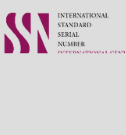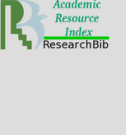Association of Interleukin-13 and Toll-like Receptor-2 Polymorphisms with Lymphoma Susceptibility: A Case-Control Study from Islamabad Pakistan
Keywords:
HL, IL-13, Lymphoma, Polymorphism, TLR-2Abstract
Background: Interleukin-13 (IL-13) is a T helper 2 (Th2) cytokine commonly associated with allergic disorders. Toll-like Receptor-2 (TLR-2) provides first line of defense against pathogens. IL-13 and TLR-2 are known to play roles in tumorigenesis and progression.
Objectives: To investigate clinicopathological features of lymphomas and find the association of IL-13 2044G/A and TLR-2 Arg677Trp polymorphisms with lymphoma susceptibility.
Methods: Total 85 lymphoma patients from Nuclear Medicine Oncology and Radiotherapy Institute (NORI) Islamabad, and 90 controls were included in the study. Restriction fragment length polymorphism (RFLP) for the IL-13 gene after polymerase chain reaction (PCR), whereas Tetra-primer amplification refractory mutation system (Tetra-ARMS) PCR for TLR-2 gene were performed on purified DNA extracted from blood.
Results: Out of 85 lymphoma patients, 70.58% of cases were of non-Hodgkin lymphoma (NHL) and 29.42% of Hodgkin lymphoma (HL) type. Among NHL, diffuse large B cell lymphoma (DLBCL) was the prevalent subtype (80%), while Mix cellularity (MC) was the most prevailing HL type (88%). Genotype analysis of IL-13 2044G/A polymorphism demonstrated no association with lymphoma [χ2=2.86, P-value=0.23] as well as in the DLBCL group [χ2=3.141, P-value=0.201]. However, the analysis of allelic frequencies in DLBCL patients regarding IL-13 2044G/A polymorphism showed a significant association of A allele [χ2=4.6, p-value=0.03]. Similarly, no association of TLR-2 Arg677Trp polymorphism was found in lymphoma patients [χ2=0.51, P-value=0.43] and in DLBCL patients [χ2=0.02, P-value=0.87].
Conclusion: IL-13 and TLR-2 polymorphisms were not associated with lymphoma susceptibility. However, IL-13 polymorphism showed a one-fold risk for lymphoma.
Downloads
Downloads
Published
Issue
Section
Categories
License
Copyright (c) 2024 Open Access Journal

This work is licensed under a Creative Commons Attribution-NonCommercial 4.0 International License.



